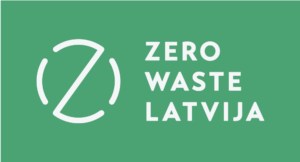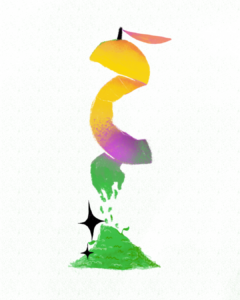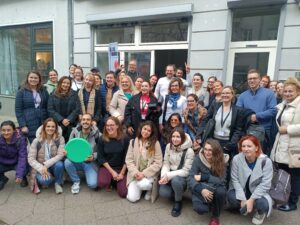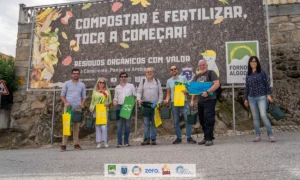Waste incineration? Let’s not burn our bridges!

A letter to Latvian decision makers
 Zero Waste Latvia is calling on Latvian decision makers to stop pursuing waste incineration and start promoting a true circular economy.
Zero Waste Latvia is calling on Latvian decision makers to stop pursuing waste incineration and start promoting a true circular economy.
Latvia has been identified by the European Commission among the countries at risk to miss the recycling target set by the EU Waste Directive for 2020 and 2035. At the same time, it is the only EU country pushing for the possibility to finance so called waste-to-energy plants under the EU Cohesion Fund, which aims to reduce economic and social disparities and to promote sustainable development across European regions.
According to Zero Waste Latvia, the country “wants household waste incineration to be counted towards the waste recycling objectives. However, even if incineration reduces the amount of waste that ends-up in landfills, it does not increase recycling”– and it may actually slow it down instead.
If burning our waste away is often presented as a smart way to get rid of our trash while even producing some energy out of it, research has been showing that this if far from the truth.
Not only incineration is less desirable than recycling in terms of energy efficiency, profitability, job creation and flexibility, it also discourages efforts to keep resources in the system, while creating incentives to generate more waste.
Incinerators are expensive to build, and to repay the investment costs they need a guaranteed stream of waste. This disincentivise countries, cities and communities to enhance separate collection and recycling. As a result, it is typical for countries that encourage incineration to have low recycling rates. If we add considerations on how emissions from waste burning plants contribute to air pollution and climate change, there are many reasons why investing in incineration is actually a very bad idea.
This is why more an more countries are shifting away from incineration and embracing Zero Waste paths, and the EU has taken a first step to phase out waste burning practices in the context of the EU Action Plan for the Circular Economy.
Of course, each country has its specific context and challenges to address. If incineration is not a desirable option, what could Latvia do instead? Zero Waste Latvia comes to the rescue: “in Latvia, a third of all household waste is organic waste, and packaging accounts for almost another third. This indicates a great recycling potential”. Developing organic waste sorting and composting, as well as improving packaging collection and recycling – including the implementation of deposit schemes – may therefore pave the way for Latvia to enhance its waste management, without burning its bridges.
Read the full letter (translated by Ieva Tazane):
“The organizations Green Liberty and Zero Waste Latvia call on Latvian society to act to change the Latvian position in the negotiations regarding activities to be co-financed from the Cohesion Fund under the next EU MFF, and notably to change the Latvian position regarding household waste incinerators. Please see the information below.
According to the early warning report by the European Commission, Latvia might not reach the EU Waste directive goals set for the year 2020 and, possibly, neither the ones for the year 2035 [1]. In 2016, only 25,2 % of household waste were sorted for recycling [2].
In the current negotiations regarding the next MFF Latvia is the only EU Member State which strongly objects to the European Commission’s proposal to exclude household waste incinerators from the list of eligible Cohesion Fund projects. Latvia wants household waste incineration to be counted towards the waste recycling objectives. However, even if incineration reduces the amount of waste that ends-up in landfills, it does not increase recycling.
According to the EU Waste directive ‘‘recycling” means “any recovery operation by which waste materials are reprocessed into products, materials or substances whether for the original or other purposes. It includes the reprocessing of organic material but does not include energy recovery and the reprocessing into materials that are to be used as fuels or for backfilling operations”, which means incineration is not recycling. Therefore, investing public money into household waste incinerators is a waste of funding into unsustainable technologies that will not help achieve recycling goals. In spite of that, Latvia is planning to build an incinerator in Ventspils City, which will be operational as of 2020.
Incinerators might seem to be a great source of power and heat; however, their primary goal is waste management, therefore power/heat generation cannot justify a decision to build an incinerator. Besides, incinerator’s energy and carbon balance should be taken into account when evaluating its actual energy performance [3].
In addition, incinerators have some serious negative side-effects. They emit harmful substances, even if there is no visible smoke, and leave toxic slag which has to be disposed of. The residue can also be reused if purified beforehand, however the legislative requirements are not sufficiently stringent. Secondly, incinerators need a constant input of waste, which means that waste that might be recycled will be burnt [4]. This is also inconsistent with the principles of circular economy and the EU waste management hierarchy, where energy recovery is at a lower position than prevention and recycling.
In Latvia, a third of all household waste is organic waste, and packaging accounts for almost another third. This indicates a great recycling potential, to the extent that sufficient investments are made into organic waste sorting and composting, the infrastructure for separate collection of packaging is improved – which implies also implementing a deposit-refund scheme – and recycling activities are promoted.
Instead of falling back and implementing an obsolete waste management method, Latvia should reduce waste production and focus on improving its waste recycling infrastructure and implementing a composting system.
Zaļā Brīvība
Zero Waste Latvija
[1] At least 50 % of household waste to be reused or recycled by 2020, and at least 65 % by 2035. No more than 10 % of produced household waste to be landifilled.
[2] https://ec.europa.eu/eurostat/tgm/table.do?tab=table&init=1&language=en&pcode=t2020_rt120&plugin=1
[3] It might be difficult to estimate the balance, as the composition of waste inflows might not be thoroughly analysed.
[4] For example, in France 42 % of incinerated household waste is recyclable (72 % including organic waste) (Syctom). A lot of incinerated waste are plastics produced from fossil resources, which makes their incineration unsustainable from the climate perspective.
Read the original letter in Latvian“Latvia wants household waste incineration to be counted towards the waste recycling objectives – but even if incineration reduces the amount of waste that ends-up in landfills, it does not increase recycling”



